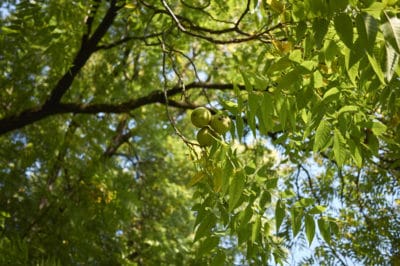Climate Considerations
Although English and black walnuts grow in USDA plant hardiness zones 3 through 7 and 4 through 9 respectively, there’s much more to their climate story. Your USDA zone indicates the lowest winter temperature in your area, but walnuts also require a specific number of hours between 33° and 45°F (33° and 45°F (0.55° and 7.2°C). Technically, these are called chilling hours.
Why Chilling Hours Matter
Without enough chilling hours, walnut trees flower less heavily than normal, or not at all. No flowers means no fruit, and no fruit means no walnut harvest. (A walnut is actually the seed of a fruit known as a drupe!)
Chilling Hours by Variety
Because black walnuts grow in zones 4 though 9, one might think they need fewer chilling hours than their English relatives. In reality, they won’t flower without a whopping 1400 of them.
Among the most commonly grown English walnut cultivars, chilling hour requirements vary from 300 to 700. Some examples:
- ‘Placentia,’ ideal for mild-winter coastal climates. 300 chilling hours
- ‘Pedro,’ a compact, 40-foot self-pollinator. 400 chilling hours.
- ‘Serr,’ another self-pollinator that tolerates hot summers climates and relatively poor soils. 600 chilling hours.
Frost and Heat
In addition to chilling hours, walnut trees need a frost-free growing season of at least 140 days; 170 days is much better. Untimely spring frosts can kill their buds and blooms. And during summer, prolonged temperatures of 100°F (38°C) or higher harm the fruit and reduce the size of the walnuts. The severest damage occurs above 107°F (41.7°C).
Where to Plant Walnuts
As essential as the right climate is for growing walnuts, it’s just a start. Where you plant your trees is equally important.
Soil
Walnut trees thrive where their roots penetrate at least 10 feet into deep, well draining soil. Organically rich sandy loam is ideal. To help a walnut seeding root quickly, loosen the top 27 inches of soil with a rotary tiller before planting.
Sun and Water
Walnut trees require full sun (six or more hours per day) and about 50 inches of water per year, including rain. Half of that water (25 inches) should come between June and August, so you’ll have to provide what Mother Nature doesn’t.
